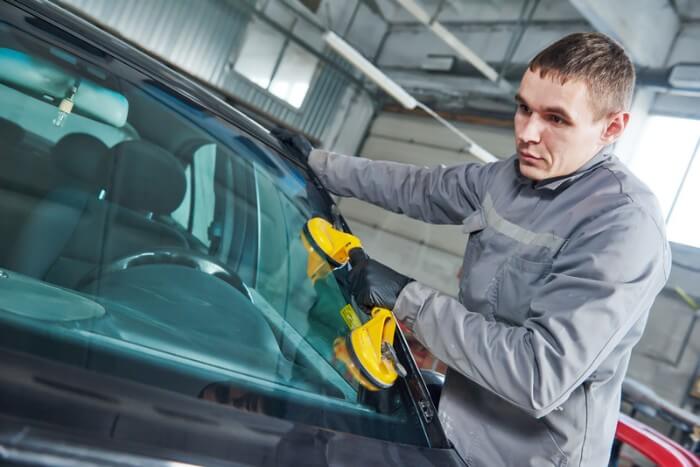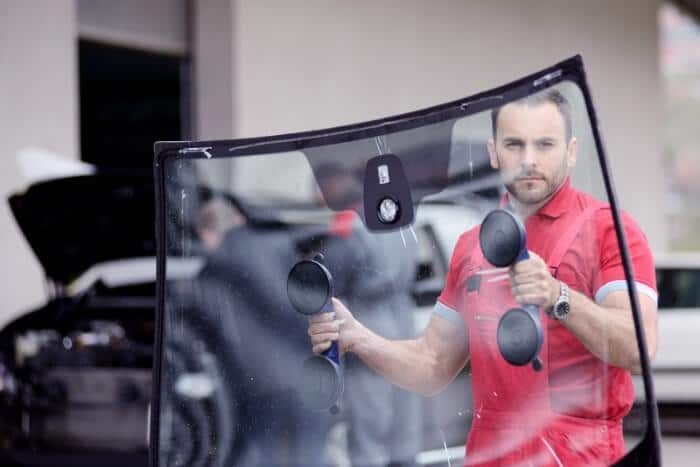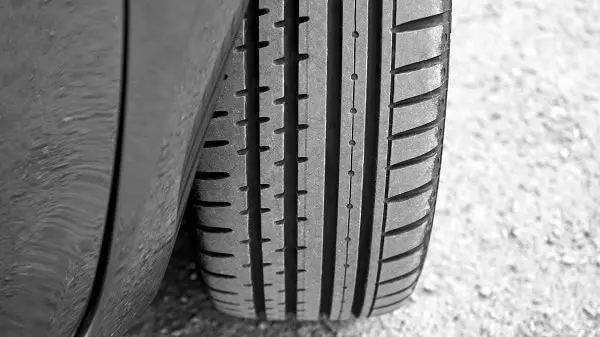Something people often overlook is the amount of noise they encounter when driving. This noise is typically a combination of different environmental and mechanical factors that all coalesce into one loud and distracting body of sound.
Noises of this level can contribute to a lack of focus, stress, and disorientation. It can even prevent you from properly hearing the people in your vehicle with you.
Fortunately, there are some technologies to help combat noise in your car. Today we’re going to take a look at the acoustic windshield and discuss everything there is to know about it.
Noise Reduction And Why It’s Important
No one likes excess noise – it’s loud, unnecessary, and distracting. However, the negative effects of noise can go much deeper than simply causing some ringing in your ears. Let’s take a look at why reducing noise is actually important.
What’s So Bad About Noise?
Recent studies show that constant exposure to elevated sound levels can actually take a toll on our mental and physical health.
This can be seen in a study conducted by the Center for Disease Control and Prevention that found higher rates of hypertension and high cholesterol in people who are regularly exposed to loud noises at work. This is most likely linked to the noise-induced stress that comes with working in such an environment.

Another thing that is greatly affected by noise is your focus. Some people might be okay with it, but background noise can actually negatively impact your ability to focus on whatever your current task may be. This is due to your brain trying to process the surrounding sounds into an understandable medium. This subconscious processing requires brainpower, which is usually diverted away from whatever you are consciously allocating it into.
Soundproofing
This new understanding of noise’s negative impact has led to an increased trend in soundproofing, which basically means optimizing your space to reduce the amount of noise that reaches your ears. This is typically done by introducing materials that help block out noise through the process of insulation. Acoustic windshields follow this basic principle of soundproofing.
Acoustic Windshields 101
Acoustic glass windshields are slowly becoming the standard in newer vehicles, and yet most people don’t even know what they are. Here’s everything you need to know about acoustic windshields.
What Is An Acoustic Windshield?
At first glance, an acoustic windshield looks just like any other glass windshield. It works to protect everyone in the vehicle by keeping out any debris that your vehicle might encounter during your drives.

However, acoustic windshields also have the added responsibility of reducing the penetration of outside noise. To achieve this, they are specifically manufactured with sound-dampening properties. They are also sometimes called acoustic glass.
What Makes An Acoustic Windshield Different?
Normal car windshields are made of several layers of shatter-resistant laminated safety glass. These laminated glass layers are typically held together by an internal layer of polyvinyl butyral (PVB), which keeps the glass bonded together and prevents it from breaking apart into smaller pieces. Acoustic windshields utilize a special type of insulating “acoustic PVB” compound that is inserted in between two pieces of laminated glass.
How Does An Acoustic Windshield Work?
The acoustic vinyl layer added to these windshields works as an insulator. This means it interrupts the normal flow of acoustic vibration. Upon hitting the PVB layer, some of these acoustic vibrations are absorbed by the material and dispersed as heat energy.

This effectively reduces the amount of sound that passes through the glass and into the vehicle. The PVB layer is intended to work against frequencies between 1500 Hz and 5000 Hz.
What Else Does An Acoustic Windshield Do?
Apart from helping to soundproof your vehicle, acoustic windshields also offer you some added functionality.
The inclusion of the acoustic vinyl layer in between two pieces of safety glass makes the windshield much more durable. It also helps block out UV rays, which have slowly become a bigger concern for all of us.
Also Read: How To Stop Windshield Wiper Noise
How To Tell If You Have An Acoustic Windshield?
A lot of newer vehicles already come pre-installed with laminated acoustic windshields – which means you may already be enjoying their benefits without even knowing about it.
Most vehicle manufacturers indicate if your windshields are acoustic by printing some graphics on the corners or sides of the glass. Be on the lookout for any of the labels below. However, do take note that these vary depending on your vehicle’s specific model.
- The word “Acoustic” printed somewhere on the glass
- The letter A
- An ear-shaped logo, sometimes with an arrow passing through it
- The word “SoundScreen”, which is what some manufacturers call it
Checking your vehicle owner’s manual might also help if none of the labels listed above were present. If you really aren’t sure, you can also ask the dealer who sold you your vehicle.
The Benefits Of Having an Acoustic Windshield
Acoustic windshields do a lot more than simply blocking out sound. Let’s take a closer look at some of the benefits acoustic windshields can provide you and your vehicle.
Noise Reduction
Noise reduction is the main reason for having an acoustic glass windshield. As stated earlier, they dampen most sounds in the frequency range of 1500 to 5000 Hz. This range includes a lot of common sounds that you encounter while in traffic, such as those produced by the wind or car engines. Sounds are reportedly reduced by the acoustic glass as much as 3 decibels.

The 3 decibel sound reduction might not seem like all that much at first, but it actually makes a difference for a lot of environmental sounds you hear on the road. It can reduce most engine sounds to an acceptable level when you’re stuck in traffic.
It also makes a huge difference in the volume of the wind when you’re driving at high speeds. Try opening your window the next time you drive on the highway to see just how loud wind can be.
Stronger Windows And Windshields
Safety glass, the material most commonly used in vehicle windows and windshields, is already designed to be very hard to break. Upon impact, laminated safety glass distributes the force across the entire surface and cracks in a spiderweb-like fashion. This prevents it from breaking up into smaller glass shards and is why it’s called “safety glass”. Unfortunately, this doesn’t make the glass completely shatterproof since a very strong impact can still break it.

Acoustic windshields have similar properties to normal safety glass. However, the acoustic vinyl (PVB) layer that comes with acoustic windshields actually makes them much more sturdy. The glass still isn’t shatterproof, but the added durability and shatter resistance are still much appreciated.
This added durability can also help prevent people from breaking into your vehicle. Since windshields are typically the most vulnerable parts of a vehicle, most thieves will attempt to break them in order to gain access to the inside of the car. The acoustic glass windshield will be much harder to break due to the added acoustic PVB layer. It might not stop thieves from trying, but the added structural integrity will definitely help discourage them.
Thinner And Lighter Glass Windshields
Glass is a notoriously bad sound insulator. In the past, vehicle manufacturers attempted to remedy this by using thicker glass in their windshields. Not only did this not work effectively as a sound insulator, but it also made the vehicles heavier. This resulted in slightly heavier vehicles that required more fuel to power them.
Acoustic glass windshields are much thinner and lighter than these thick vehicle windshields of the past. They offer much better sound blocking while simultaneously making your vehicle lighter and more fuel-efficient.
UV Resistance

Most modern acoustic windshields come with built-in UV reducing properties to protect the UV-vulnerable acoustic vinyl layer. This creates a windshield that is very resistant to UV rays, which is especially helpful to people who do a lot of driving under the sun. The UV reduction will help protect the people inside the vehicle from sunburn and other skin problems. As a bonus, it can also protect the vehicle’s interior from bleaching under the sun.
Are There Downsides?
At this point, you might be thinking that getting an acoustic windshield is a no brainer. Sure, it offers a lot of benefits that a normal windshield doesn’t, but having one installed does also come with some caveats. Specifically, its price and maintenance cost.
Truth be told, acoustic windshield technology is still fairly new. This means that producing them for different vehicles is still a fairly expensive process. Depending on the specific make and model of your vehicle, getting acoustic windshields installed can cost upwards of 400 USD. And if your acoustic windshield gets damaged, a replacement will cost more or less that same as the initial installment.
Are Acoustic Windshields Enough?
If you’re looking to reduce the noise level in your vehicle, then there’s no denying how helpful an acoustic windshield can be to you. However, getting an acoustic windshield installed is far from being the only thing you can do to soundproof your vehicle.
Your average drive in traffic will expose you to noise at a level of roughly 75-80 decibels. This is higher than the recommended sound level of 70 decibels and below. People with prolonged exposure to noise 85 decibels and higher are at a much greater risk of hearing loss. The 3-decibel reduction provided by acoustic windshields definitely helps, and can even be further improved upon.
How To Further Soundproof Your Vehicles
There are lots of other soundproofing methods that can be utilized alongside the installation of an acoustic glass windshield. Let’s take a look at some of them.
Install Damping Mats
Most of the noise that enters the vehicle actually comes in through its undercarriage. This is because the vehicle’s undercarriage contains a lot of its moving parts. You might not really notice it but the material that makes up your vehicle’s floor is actually very thin, which explains why it leaks in a lot of external noise.

Damping mats are specialized floor mats that can be installed to reduce noise. They replace your standard non-soundproofing floor mats and absorb a lot of the external noise that leaks into your vehicle through its floor.
Dynamat and Dynamat alternatives such as Hushmat offer good quality damping mats.
Insulate The Doors And Roof
If there weren’t any components inside them, your vehicle’s doors and roof would have been completely empty. Their housing is made up of the same thin materials that make up your vehicle’s floor and has very little (if any) insulation. This can be remedied by opening them up and installing some sound damping materials yourself.
Change Your Tires

Believe it or not, your tires are actually some of the biggest contributors to noise in your vehicle. This is mainly due to them being the only parts of your vehicle that are actually in contact with the ground. The vibrations created by simply driving over the ground are sent up through the tires and into your car.
Smaller and wider tires tend to generate the most audible noise. Quieter tires are larger and thinner as this minimizes the amount of noise generated by them while you drive. Before purchasing any replacements, check their manufacturer-reported noise rating. This will usually be provided and will let you know the number of decibels produced by the tires when they were being tested.
There are also a number of things you can do to quieten noisy tires such as adjusting the tire pressure.
For more information on how to soundproof a car, visit our guide here: How To Soundproof A Car.
Final Thoughts: Are Acoustic Glass Windshields Worth It?
Overall, acoustic glass windshields provide a lot of benefits that make them worth looking into. They can provide levels of sound reduction, durability, and UV protection that normal windshields just can’t. Acoustic windshields can be made even more effective when paired with other vehicle soundproofing methods.
That said, getting a set of replacement acoustic windshields is not cheap. Always inquire at your local car dealership about the options available for your specific vehicle’s make and model before purchasing anything.
As an Amazon Associate I may earn a small fee from qualifying purchases at no extra cost to you. This helps us run the site, so thanks for your support!